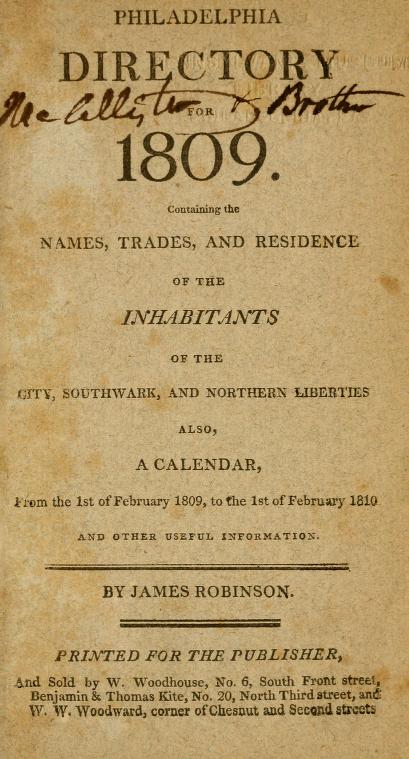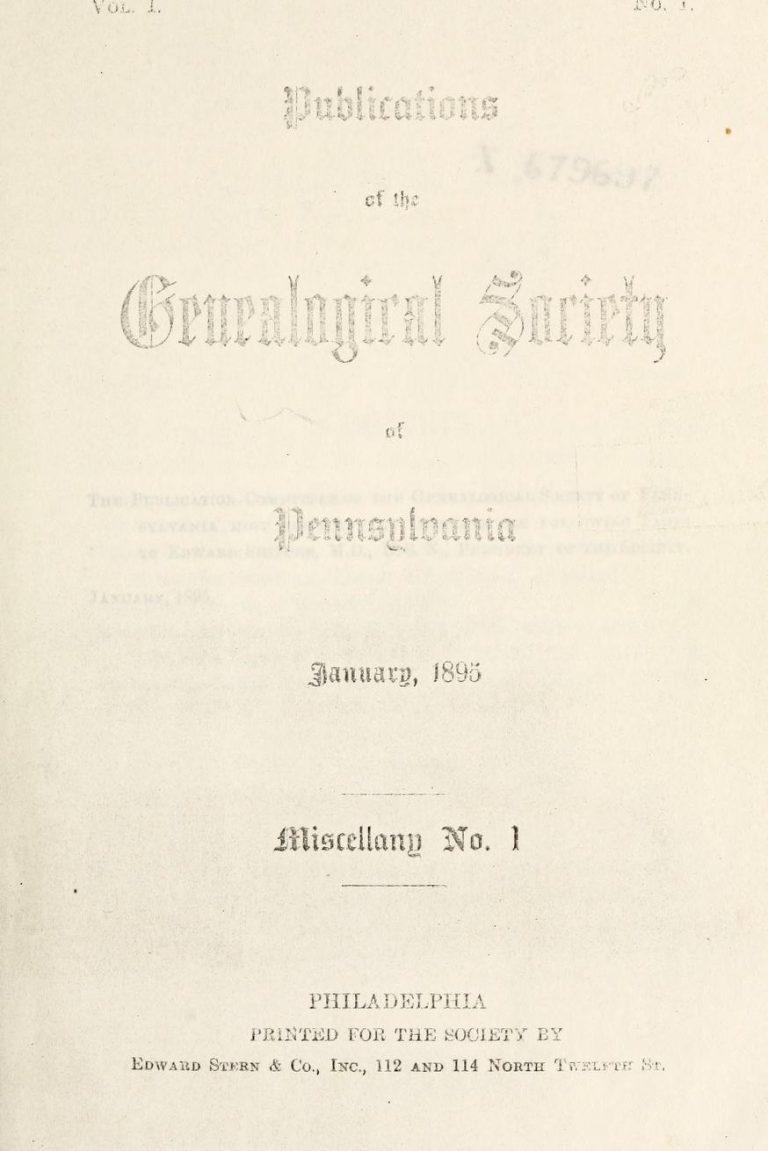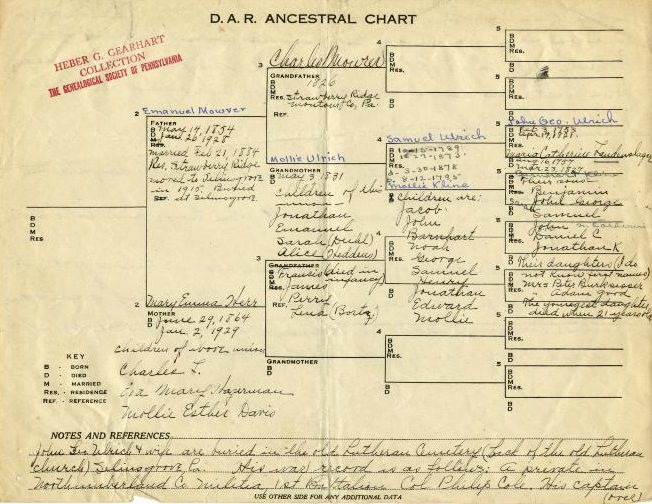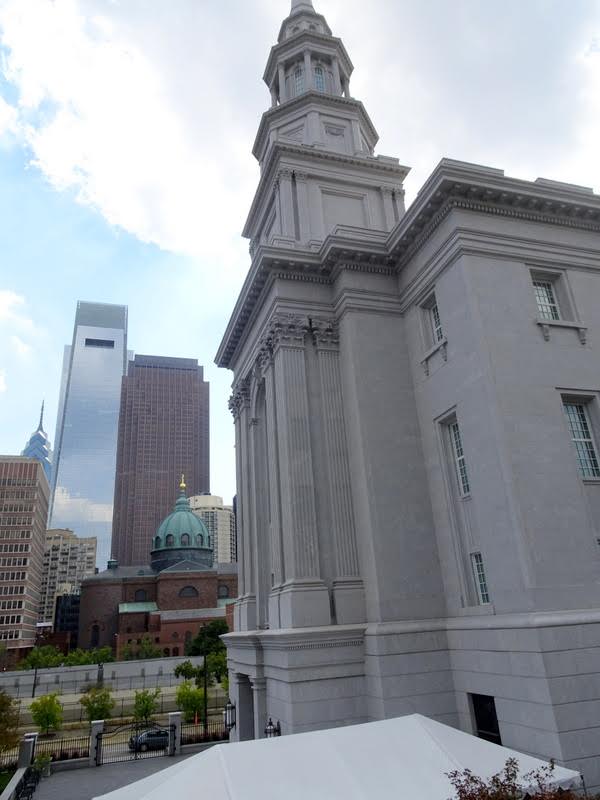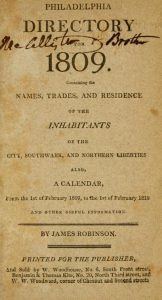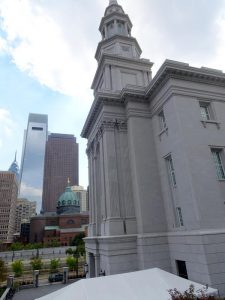Genealogy
Essay
In the Delaware Valley and the United States, the study of genealogy transformed from a pursuit of the elite in the nineteenth century into the most democratic field of historical research. The search by genealogical researchers for materials of importance that assist with pedigree building, family histories, and searches for heirs has resulted in the combining of government and private records originally created for other uses.
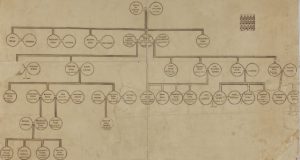
The rise of “Jacksonian democracy” in the late 1820s spurred the socially elite of Philadelphia and elsewhere to pursue their genealogy, if for no other purpose than to prove that bloodlines created an American “aristocracy” entitled to the benefits of rank. Historian François Weil named this phenomenon “patrician genealogy.” American genealogical research started principally in New England, where systematic research undertaken by antiquarians and amateur genealogists led to the establishment of the New England Historic Genealogical Society in 1845.
Philadelphians had few resources to aid the study and publication of genealogy before the Centennial of 1876. The Historical Society of Pennsylvania, established in 1824, purchased some genealogical texts, and an active “genealogical department” reported on its activities. The Pennsylvania Magazine of History and Biography, first appearing in 1877, devoted some space to the transcription of documents of genealogical import. The Centennial inspired investigation into many facets of American history and the publication of county histories with biographical sketches of leading citizens and their antecedents.
Following the Centennial, hereditary societies whose members claimed ancestry to key American events proliferated, including the Sons of the Revolution (Pennsylvania Society established 1888, New Jersey Society 1891), the Sons of the American Revolution (1889), the Daughters of the American Revolution (1890), the Society of Colonial Dames (1891), the Society of Colonial Wars (Pennsylvania Society 1893, New Jersey Society 1894, Delaware Society 1897), the Colonial Society of Pennsylvania (1895), the Mayflower Society (Pennsylvania 1896), and the Welcome Society (1906). In addition, existing veterans’ societies such as the Society of the Cincinnati, Society of the War of 1812, and the Military Order of the Loyal Legion of the United States transformed into hereditary societies as the veterans died out. A contributor to the Philadelphia Inquirer in 1894 noted that “the rage for new patriotic societies is becoming more virulent every day.”
Interest Grows
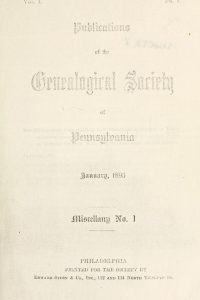
The growth of these societies led to a great interest in the study of genealogy and the establishment of institutions to foster research. Members of the Historical Society of Pennsylvania with genealogical interests banded together to form the Genealogical Society of Pennsylvania in 1892 with the goals of promoting genealogical research and acquiring and preserving vital records maintained by government and religious societies. Like its counterpart in New England, the Genealogical Society soon began publishing a series entitled Publications of the Genealogical Society of Pennsylvania. Galvanized by the same desire, residents of Chester, Delaware, and Camden Counties established their own historical societies in 1893, 1895, and 1899, respectively (the historical societies of Bucks and Montgomery Counties had been in existence since 1880 and 1881). The establishment of formal state archives in the Delaware Valley occurred in Pennsylvania in 1903, Delaware in 1905, and New Jersey in 1920. These centers also attracted genealogical researchers.
Early in the twentieth century, genealogists recognized the importance of preserving tombstone inscriptions and paper records. Weathering of early tombstones and closure of many old cemeteries resulted in the loss of information of genealogical value. The Genealogical Society of Pennsylvania worked to copy cemetery records and publish tombstone inscriptions. New Jersey “tombstone hounds” collaborated to found the Genealogical Society of New Jersey in 1921 dedicated to the preservation of New Jersey family history.
The standards of genealogical research improved throughout the twentieth century with the increasing availability of primary source documents. Lineage societies tightened the genealogical process, requiring that submitted lineages be reviewed by an independent genealogist along with documentation for every event.
Although amateur genealogy in the early twentieth century primarily centered on a desire to connect one’s lineage to someone notable, some genealogists became interested in achieving something more extensive by the late 1940s and early 1950s. Correspondence with potential family members formed the basis of their initial research, followed by searches of original records found in historical societies and archives to confirm the oral traditions. The Genealogical Society of Pennsylvania changed the format of its publication, which it retitled in 1948 as Pennsylvania Genealogical Magazine, to offer a forum for area genealogists.
Better Access to Records
As historical societies throughout the Delaware Valley served increasing numbers of genealogical researchers, their professional staffs sought to improve access to their records with genealogists in mind. The formation of new archives, including the Philadelphia City Archives (1952) and county archives in Chester (1982), Montgomery (ca. 1980s), and Delaware (2003) Counties, opened local access to thousands of records with genealogical potential, including deeds, naturalizations, and vital records. Both the National Archives and the Church of Jesus Christ of Latter-day Saints (the Mormons) created regional centers in the Delaware Valley for researchers and genealogists in the 1960s.
The full shift in genealogical thought and practice from nineteenth-century elitism to a democratic acknowledgment of the place of one’s personal ancestors in history followed both the Bicentennial celebrations of 1974–76, which in Philadelphia not only increased patriotic fever but also emphasized the ethnic origins of Americans, and the broadcast of the TV series Roots in 1977. Researchers recognized that their ancestors witnessed and participated in events found in history books. Finding that sense of place helped personalize history for the researcher.
In the post-Roots era, the Delaware Genealogical Society (1977), the Old York Road Genealogy Society (1978), the Jewish Genealogical Society of Greater Philadelphia (1979), the Central Jersey Genealogical Club (1994), the Main Line Genealogy Club (2002), and the Bucks County Genealogical Society (2012) were but a few of the societies that formed to provide genealogists with support and training. In 1977, the Afro-American Historical and Genealogy Society Inc. was incorporated in Washington, D.C., and soon had chapters throughout the country, including Philadelphia (1989), New Jersey (1991), and Delaware (2012).
The 1990s witnessed a major change in the genealogical landscape. The decision by the Historical Society of Pennsylvania to change its relationship with various genealogical and lineage societies from partner to landlord led to a loss of the sense of common purpose once enjoyed by all, as well as some important genealogical holdings. With its vast genealogical and archival holdings continuing to attract many researchers, the Historical Society continued as a major genealogical research mecca in the Delaware Valley. It hosted many genealogical events, often with the assistance of the Greater Philadelphia Area Chapter of the Association of Professional Genealogists (established in 2004 and revived in 2012). The Genealogical Society of Pennsylvania left the Historical Society building in the 1990s. It continued to publish genealogical materials and embraced training of genealogists as one of its prime missions. In 2016, it established a new office in Northeast Philadelphia.
From Shoeboxes to Digital Archives
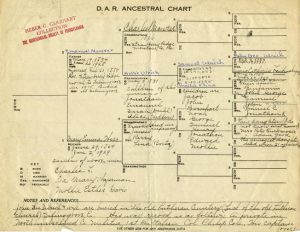
By the twenty-first century, the advent of computer technology and the Internet increased access to many records once lost in the boxes and vaults of archives throughout the world. Initially led by the Genealogical Society of Utah (the genealogical arm of the Mormon Church, which developed the free website familysearch.org), for-profit firms including Ancestry.com and Fold3.com delved into various archives and historical societies to digitize records of genealogical value. This proved a double-edged sword: the digitization of the records fulfilled archivists’ desire for preservation but resulted in a decline in visitors to sites where they could benefit from archivists’ insight and expertise in interpreting these records.
The Internet also provided a forum for many genealogists to connect families, share research, and assist in the creation of online tools. FamilySearch.org welcomed and trained individuals to transcribe and index their holdings. FindAGrave.com and BillionGraves.com are two sites that have relied heavily on the efforts of local volunteers. Their work has resulted in the publication of the location of millions of graves found in thousands of cemeteries throughout the United States.
The search for ancestral roots spurred creation of many free and for-profit genealogical websites. Genealogists’ desire to locate and organize records has led to a greater understanding of American history and citizenship from a local and personal perspective: their research has greatly assisted the work of other historians in finding and piecing together the fabric of American culture.
Jefferson M. Moak is a professional archivist, historian, and genealogist. He has worked at the Map Collection of the Free Library of Philadelphia, Philadelphia ’76 Inc., the Philadelphia Historical Commission, the Philadelphia City Archives, the National Archives at Philadelphia, and the Independence Seaport Museum. He has undertaken extensive research into the architectural, cartographic, and neighborhood histories of Philadelphia. He has served on the board of the Genealogical Society of Pennsylvania and works as verifying genealogist for several lineage societies in the Delaware Valley. (Author information current at time of publication.)
Copyright 2017, Rutgers University
Gallery
Backgrounders
Connecting Headlines with History
- Family lore from Civil War led to deeper truths (WHYY, April 14, 2011)
- Tangled roots and far-reaching limbs on reporter's family tree (WHYY, May 11, 2012)
- Tracing our roots, searching for connection (WHYY, May 21, 2012)
- Digital meets gravestone: a lesson in ancestry (WHYY, September 28, 2012)
- For these Mormons, getting Historical Society of Pa.'s trove of records online is religious work (WHYY, October 6, 2014)
- 'Genealogy Roadshow' samples Philly ancestry, sifting for drama (WHYY, October 27, 2014)
- Inside the vaults of the Delaware Public Archives (WHYY, February 27, 2015)
Links
- American Ancestors by New England Historic Genealogical Society
- Pennsylvania Magazine of History and Biography (Historical Society of Pennsylvania)
- General Society Sons of the Revolution
- Sons of the American Revolution
- Daughters of the American Revolution
- The National Society of The Colonial Dames of America
- General Society of Colonial Wars
- General Society of Mayflower Descendants
- The Welcome Society of Pennsylvania
- The Society of Cincinnatti
- The Military Order of the Loyal Legion of the United States: Commandery of the State of Pennsylvania
- Genealogical Society of Pennsylvania
- City of Philadelphia Department of Records
- Delaware Genealogical Society
- Old York Road Genealogical Society
- Jewish Genealogical Society of Greater Philadelphia
- The Central Jersey Genealogical Club
- Main Line Genealogy Club
- Bucks County Genealogical Society
- Afro-American Historical and Genealogy Society Inc.
- The Greater Philadelphia Area Chapter of the Association of Professional Genealogists

